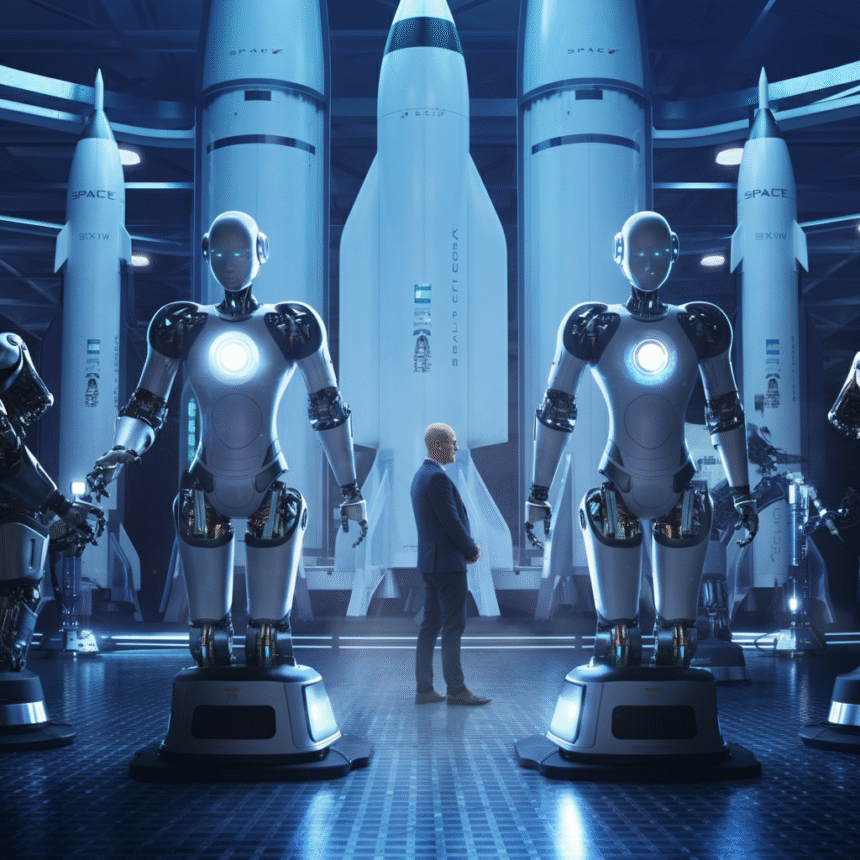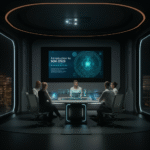Elon musk robots has become synonymous with innovation. From revolutionizing electric vehicles with Tesla to pioneering space exploration with SpaceX, Musk’s work consistently pushes the boundaries of technology. His latest focus? Robots. But not just any robots. One of his most ambitious projects, Tesla Bot, promises to blend human-like mobility with AI-powered intelligence.
But what exactly is Musk hoping to achieve with robotics? And what does this mean for the rest of us? This blog dives into Musk’s robot ventures, their potential applications, and the ethical and societal implications they raise.
What Is the Tesla Bot?
Unveiled in August 2021 during Tesla’s AI Day, the Tesla Bot (also known as Optimus) is elon musk robots vision for a humanoid robot powered by Tesla’s advanced AI systems. The bot is designed to perform “dangerous, repetitive, or boring tasks,” liberating humans to focus on creativity, innovation, and personal fulfillment.
Features and Specifications
While the Tesla Bot is still under development, here are some of its proposed features as shared by Tesla:
- Height and Weight: It stands at 5’8″ tall and weighs around 125 pounds, making it roughly the size of an average adult.
- Mobility: The robotic system is designed to move at a maximum speed of 5 mph and can carry up to 45 pounds, meaning it can safely traverse spaces without posing a direct threat to humans.
- Human-Centric AI: The Tesla Bot incorporates the same Full Self-Driving (FSD) suite found in Tesla vehicles, allowing it to interpret its surroundings and adapt to different tasks.
- Tasks It Can Handle: Initially, tasks like carrying groceries, lifting heavy objects, assisting workers in manufacturing, and even basic household chores are in the pipeline.
Musk has often pointed out that the Tesla Bot is meant to be “friendly” and safe to interact with. If commercially successful, such robots could transform industries like agriculture, retail, healthcare, and manufacturing.
More Than Tesla Bot: Elon Musk’s Wider Robotics Ventures
While most discussions around Musk and robotics focus on Tesla Bots, it’s worth noting that his robotics vision extends beyond this single project.
SpaceX
Space exploration relies heavily on robotic technology, and SpaceX is no exception. Musk’s company employs robotic systems in various ways:
- Construction and Maintenance: Robots are integral to the assembly and maintenance of SpaceX rockets such as Falcon 9 and Starship.
- Mars Colonization: Musk has long stated that robotics will be critical in establishing and maintaining a sustainable colony on Mars, doing everything from constructing habitats to farming in hostile environments.
Neuralink and Robotics
Another of Musk’s companies, Neuralink, explores the interface between humans and machines. While Neuralink is primarily focused on developing brain-machine interface (BMI) technology, it aligns with Musk’s broader goal of robotics integration. Imagine a future where humans could directly “think” commands to robots, enabling seamless collaboration.
AI Research at OpenAI
Musk’s involvement with OpenAI also plays a role in shaping the foundation of robotics. OpenAI’s models drive cutting-edge advancements in machine learning, potentially contributing to the AI intelligence embedded within future robots.
Ethical Concerns Surrounding Robots
While Tesla Bots and similar robotic innovations promise transformative potential, they are not without their downsides. Experts and critics have raised several ethical concerns that we must address as robots grow more advanced.
Impact on Jobs
One of the primary fears surrounding robotics is mass unemployment. elon musk robots that can replace humans in repetitive tasks may render millions of jobs obsolete. According to a 2013 study from Oxford University, nearly 47% of jobs in the U.S. could eventually be automated. However, Musk argues that robots will allow workers to focus on higher-level innovative roles, though this transition could take time.
Privacy and Security
AI-driven robots that collect data as they work bring risks concerning privacy and security:
- Who owns this data?
- How can it be safeguarded?
There’s also the question of misuse in surveillance applications, where robots could be leveraged for intrusive monitoring or tracking.
Autonomy and Safety
Elon Musk himself has warned about the dangers of artificial general intelligence (AGI) being misused or going rogue. It’s why he has insisted that Tesla Bots are designed to be non-threatening and controllable by humans.
However, the challenge of ensuring comprehensive safety against edge cases remains a monumental hurdle. Can we truly ensure robots will never malfunction or harm humans?
Ethical Boundaries
Should robots have autonomy at all, or should they strictly follow human instructions? Philosophical debates about the nature of free will and control add a deeper layer of complexity when considering robotics ethics.
The Future of Robotics According to Elon Musk
Elon Musk envisions a future where robots enhance nearly all facets of daily life, from reducing physical labor to contributing to larger global missions like reversing the labor shortage. His ultimate goal is straightforward yet profound—to create a symbiotic relationship between humans and increasingly intelligent robots.
He has also hinted at robots becoming household staples, much like cars or smartphones. Instead of being limited to factories or Mars, robots could eventually assist with personalized caregiving, child supervision, and other intimate services.
Musk’s forward-thinking aligns with his belief in the importance of preparing humanity for the future, whether that concerns sustainability, space exploration, or bridging gaps between humans and technology.
The Pros and Cons of Musk’s Robot Revolution
While the prospects are exciting, the road ahead isn’t without its obstacles. Implementations of robotic technology must consider both its spectacular potential benefits and its significant ethical, economic, and societal challenges.
Key Benefits to Anticipate
- Enhanced productivity and efficiency.
- Safer work environments through automation of hazardous tasks.
- Freed-up time for humans to pursue creative and intellectual endeavors.
Key Challenges to Confront
- The social and economic displacement of workers.
- Increased cybersecurity risk from hackable robots.
- The difficulty of ensuring ethical governance.
Building the Future With Caution and Purpose
Elon Musk’s pursuit of advanced robotics may be ambitious, but it mirrors a need for innovation in today’s fast-paced world. By integrating AI, machine learning, and robotics into both practical and aspirational domains, Musk is paving the way to a future filled with new possibilities.
That said, entering a robotic future will require care, regulation, and public dialogue to maximize the benefits while mitigating risks. Businesses, governments, and the general public must be active participants in shaping the outcomes of this transformation.
Are you ready to explore the intersection of robotics, AI, and innovation? The future, as Musk sees it, starts now—with robots as an integral piece of the puzzle.


